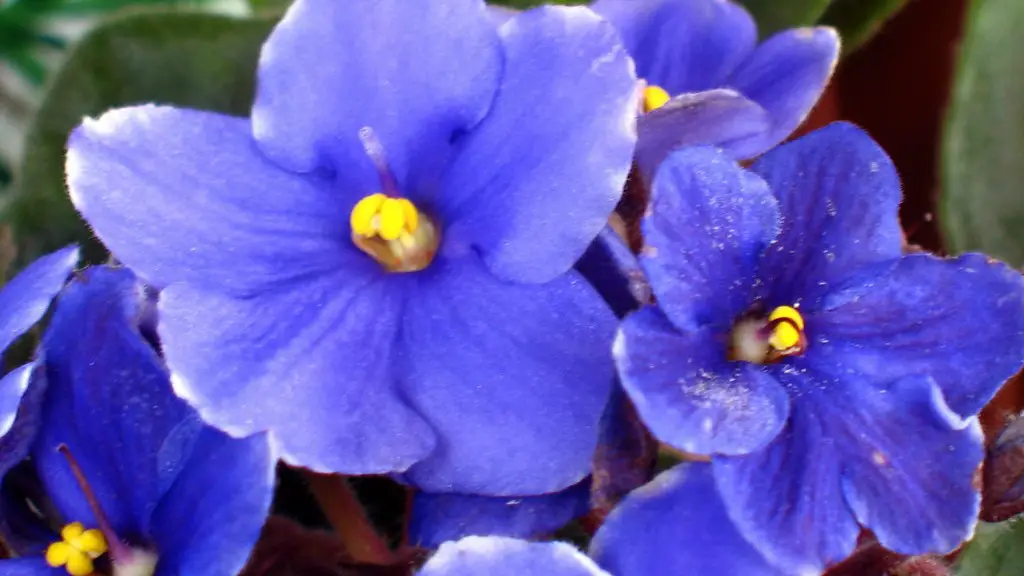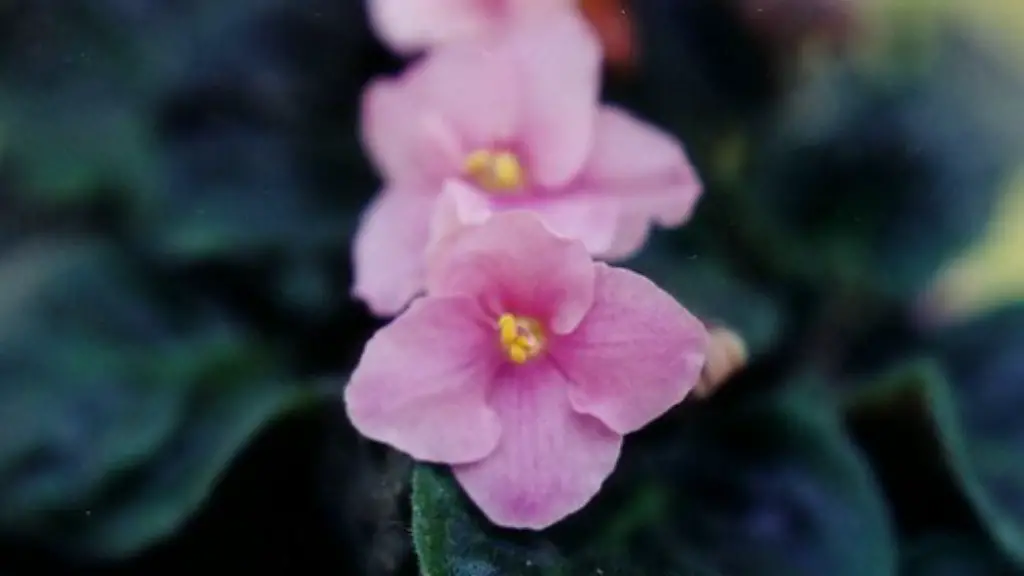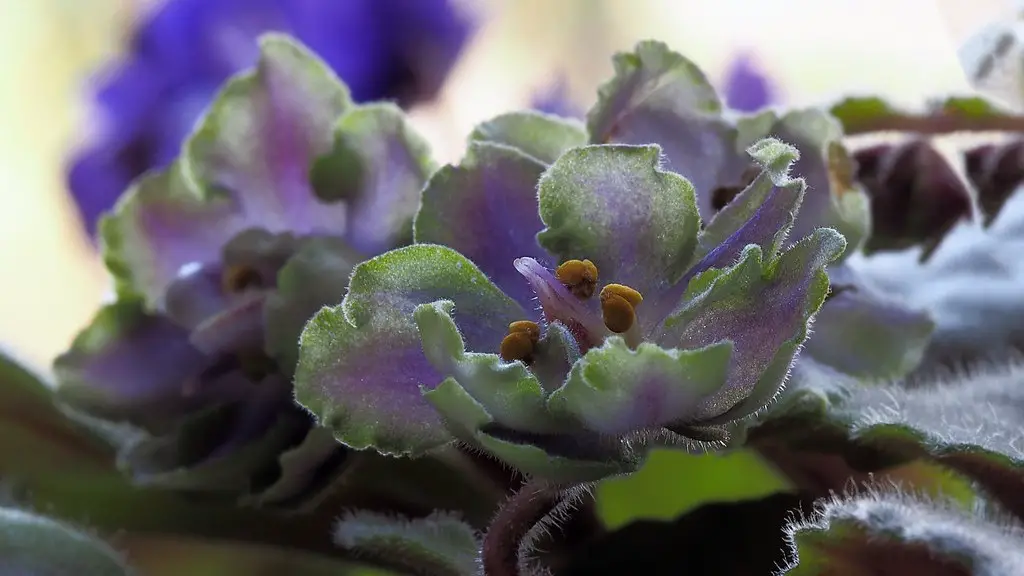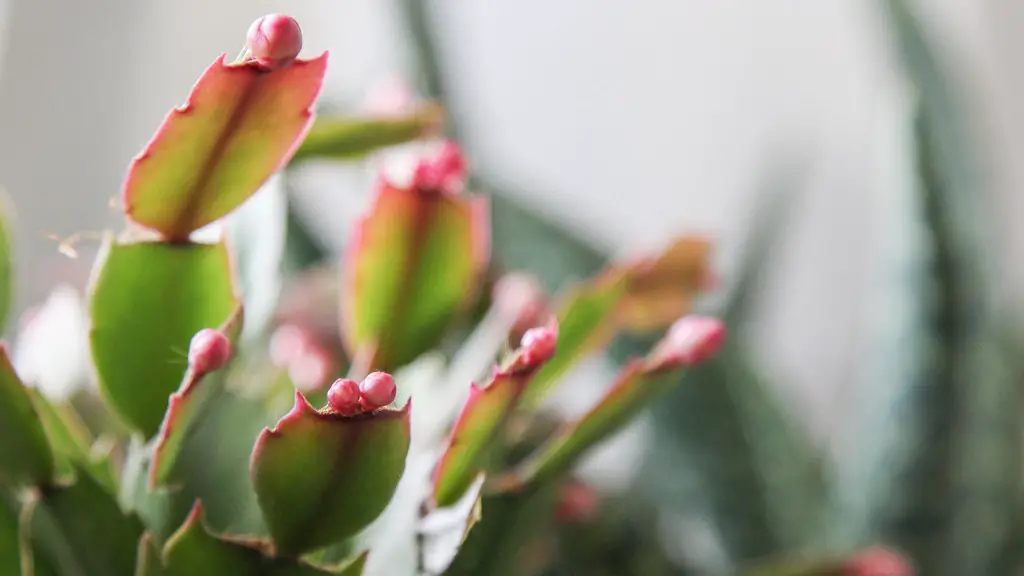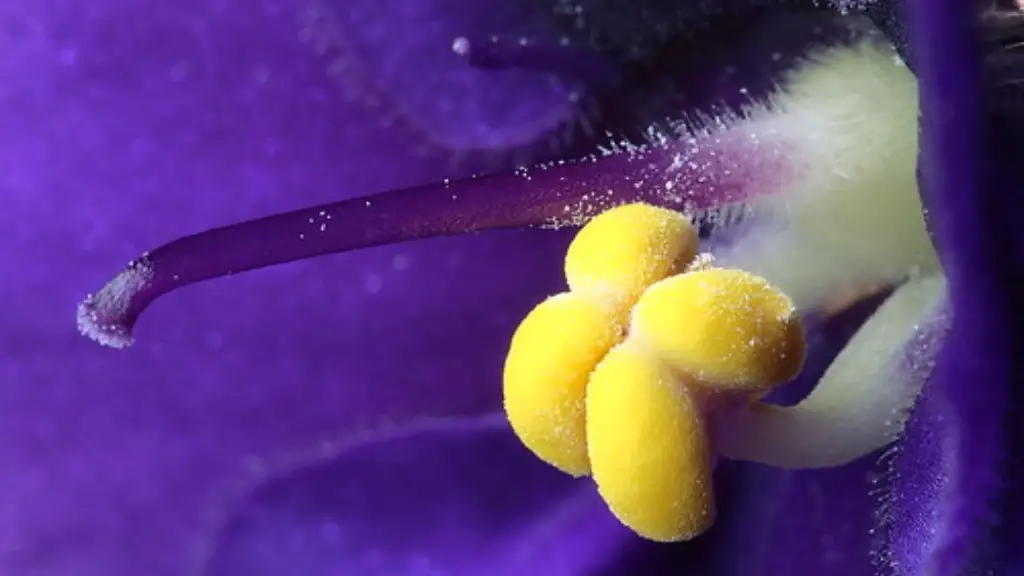If your African violets are drooping, it could be due to a variety of reasons. It could be that they are not getting enough water, or that they are getting too much water. Another possibility is that they are not getting enough light.
If you think that your African violets are drooping because they are not getting enough water, try watering them more frequently. If you think that they are getting too much water, try letting the soil dry out between watering. If you think that they are not getting enough light, try moving them to a brighter spot.
The most common reason for African violets drooping is that they are not getting enough water. This can happen if the potting mix is too dry, if the plant is in a too-sunny location, or if the plant is not getting enough humidity. Another common reason for African violets drooping is that they are getting too much water. This can happen if the potting mix is too wet or if the plant is sitting in water.
What does an overwatered African violet look like?
If your African Violet plant has been over-watered, the soil will retain too much water. This retention of water will cause the leaves and /or leaf stems to turn soft, limp or mushy.
If you have an African violet that is not looking its best, there are a few things you can do to try and revive it. First, trim off any dead, droopy, or mushy foliage. These leaves won’t recover; removing them frees up energy for your plant to heal. Next, remove your African violet from its pot and gently brush the soil from the roots. Remove any black or mushy root segments and apply root rot treatment if the damage is severe. With a little TLC, your African violet should be back to its beautiful self in no time!
What causes an African violet to wilt
If your plant is wilting, it could be a sign that it is too dry and needs water. Alternatively, wilting leaves on an African violet may also indicate that the plant is being overwatered. This can happen if the plant is given too much water, especially if it is in a plastic pot.
Wicking systems are a great way to make sure your plants never get too much water. By only watering once a week and allowing the plant to completely dry out between waterings, you can be sure your African violets are getting just the right amount of water.
How do you perk up African violets?
If your African violet has burnt or dry leaf tips, it’s likely dehydrated. Try placing your plant on a humidity tray to boost the moisture in the air. If your African violet has drooping leaves, it may be suffering from low temperatures. Keep your indoor environment around 70 degrees Fahrenheit, even at night.
It is best to water African violets from the bottom. This helps to avoid getting water on the leaves, which can cause leaf spots. It is important to use lukewarm or warm water, as cold water can shock the plant.
How do I know if my African violet is getting too much light?
African violets need plenty of sunlight, but only indirect sunlight. Too much sunlight will scorch the leaves and flowers. In some cases, too much sunlight will turn variegated leaf varieties entirely green.
If you’re African violet is finicky about its water, make sure to let the water sit for a bit before giving it to your plant. It’s best to let it sit for 24-48 hours, but if you can’t, then at least let it stand for an hour. This will ensure that the water is either tepid or at room temperature, which is what your plant needs.
How do I know if my African violet is getting enough light
African violets need indirect sunlight to thrive. If you can barely see the shade of your hand over the Violet, then it is getting the correct amount of light. Always give your African Violets plenty of indirect sunlight. Be aware that the duration and intensity of light may vary with the seasons.
African violets need indirect sunlight in order to prevent the leaves from being burned. The best place to put them would be in a north- or east- facing window. It is also important to keep the plants away from cold glass and to rotate the pot once a week so that all leaves receive light. You can extend the daylight by placing African violets under a grow light during winter months.
Do African violets need bigger pots?
African violets are best when they are slightly pot-bound, so choose a pot that’s on the smaller side. Professional Tip: If you have a standard African violet plant, your starter pot should be about 3-4 inches in diameter.
Coffee grounds are slightly acidic, which can be good for African violets as it helps them grow healthy foliage. Used coffee grounds can occasionally be sprinkled on top of the potting soil to give the plant a boost.
Where is the best place to put an African violet
African violets are beautiful plants that are typically grown indoors in North America. They require bright, indirect light and well-drained soil in order to thrive. A plant stand three feet away from a west- or south-facing window is an ideal location for them.
If you are unsure about the quality of your tap water, it is best to err on the side of caution and use filtered or distilled water for your African violets. Chlorine, chloramines, and dissolved solids can all have negative effects on these delicate plants, so it is best to avoid them if possible.
How do I know if my African violet is dying?
If your African Violet is too dry, it may also start to wilt. The most obvious clues that your plant has been underwatered are powdery dry soil and an extremely light-feeling pot. If your plant stays too dry for an extended period of time, the plant itself will dry out and may become brown and brittle.
Epsom salts are a great way to provide plants with essential magnesium and sulfur. To use, mix one and a half teaspoons of Epsom salts in a quart of tepid water and swirl to dissolve. Water your African violets (below the leaves) with this solution once a month.
Conclusion
There are a few reasons why your African violets might be drooping. One possibility is that they are not getting enough water. African violets need to be kept evenly moist, so make sure you are watering them regularly. Another possibility is that the leaves are getting too much sun. African violets need bright, indirect light, so if they are getting too much sun, they will start to droop. Lastly, it could be a sign that the plant is getting too much fertilizer. African violets need to be fertilized about once a month, so if you are fertilizing them more than that, it could be causing the leaves to droop.
One possible reason for your African violets drooping could be that they are not getting enough light. African violets need bright, indirect light in order to thrive. Another possible reason could be that you are over- or under-watering your plants. Be sure to check the soil before watering and only water when the soil is dry to the touch. With a little trial and error, you should be able to find the perfect balance for your plants.

